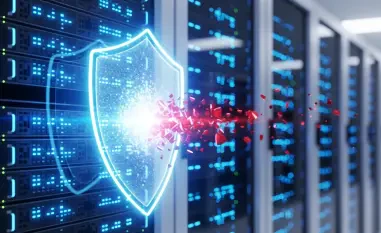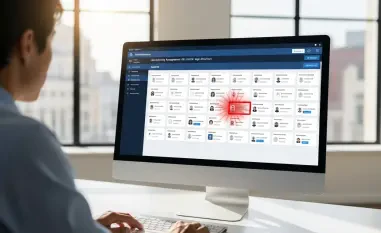Imagine a critical infrastructure facility, such as a power grid, operating on hardware decades old, vulnerable to sophisticated cyberattacks that exploit outdated security models. This scenario is not hypothetical but a pressing reality for many organizations grappling with the dual challenge of protecting legacy systems while navigating an increasingly complex threat landscape. Enter the Cybersecurity Operations Infrastructure (CSOI) from IMPRES Technology Solutions, a pioneering software-defined networking overlay designed to revolutionize network security through an identity-based approach. This review delves into the intricacies of CSOI, exploring how it addresses modern cybersecurity challenges by embedding security directly into the network stack, offering a lifeline to industries burdened by aging infrastructure.
Core Innovations of CSOI
Positioning as the “3.5 Layer” in the OSI Model
CSOI introduces a groundbreaking concept by integrating a security layer between the transport and network layers of the OSI model, aptly termed the “3.5 layer.” This unique placement allows the solution to intercept network traffic early in the communication process, enabling rigorous identity verification before data progresses further. Unlike traditional models that rely heavily on location-based access tied to IP addresses, CSOI shifts the focus to device identity, aligning with zero-trust principles where trust is never assumed.
This strategic layer draws inspiration from the host identity protocol, effectively decoupling a device’s identity from its physical or network location. Such an approach ensures that security policies are enforced based on “who” a device is, rather than “where” it resides. The result is a more robust defense mechanism capable of thwarting unauthorized access attempts that exploit IP-based vulnerabilities, a common entry point for attackers targeting outdated systems.
Cloud-Driven Management via the Conductor Dashboard
Central to CSOI’s functionality is the Conductor, a cloud-based control dashboard that serves as the nerve center for managing device identities and access policies. By assigning cryptographically secure identifiers to each device, the Conductor ensures that only authenticated entities can interact within the network. This setup enforces a deny-by-default policy, automatically blocking any device lacking a valid ID, thereby reducing exposure to threats like man-in-the-middle attacks.
The scalability of this dashboard stands out as a key strength, allowing administrators to oversee trust relationships across diverse network environments, from on-premises setups to sprawling cloud deployments. Its flexibility in policy enforcement means that organizations can tailor security measures to specific operational needs without compromising on protection. This adaptability is particularly valuable for sectors managing a mix of modern and legacy equipment under tight regulatory constraints.
Operational Benefits and Performance
Seamless Integration with Legacy and Modern Systems
One of CSOI’s most compelling advantages is its ability to safeguard legacy hardware without necessitating a complete network overhaul. Many critical infrastructure sectors operate on systems that cannot be easily updated due to cost or compatibility issues, leaving them exposed to evolving threats. CSOI’s overlay design addresses this gap by integrating seamlessly over existing infrastructure, providing identity-based protection to both old and new devices.
Beyond legacy support, the solution extends its reach to virtual and cloud environments through virtual private clouds and policy segments. This ensures consistent security across diverse operational landscapes, whether dealing with physical servers or public cloud deployments. Such versatility positions CSOI as a practical tool for organizations aiming to modernize incrementally while maintaining robust defenses against cyber risks.
Cost Efficiency and Operational Simplicity
From a financial perspective, CSOI offers significant cost-saving potential by reducing reliance on traditional security appliances like firewalls and VPNs, which often require frequent updates and maintenance. By embedding security directly into the network architecture, the need for expensive hardware refresh cycles diminishes, allowing organizations to allocate budgets more effectively. This is a critical benefit for entities balancing fiscal limitations with the imperative to bolster cybersecurity.
Operationally, the solution simplifies network management through its centralized dashboard, cutting down on the complexity associated with maintaining disparate security tools. The streamlined approach not only enhances efficiency but also minimizes the risk of human error in policy configuration. For many organizations, this translates into a dual win of heightened security and reduced operational overhead, a rare combination in the cybersecurity domain.
Emerging Trends and Industry Impact
Alignment with Zero-Trust Architectures
CSOI’s identity-centric framework mirrors a broader industry shift toward zero-trust architectures, where continuous verification replaces outdated trust assumptions. As cyber threats grow in sophistication, traditional perimeter-based defenses are proving inadequate, pushing the need for solutions that embed security at every level of network interaction. CSOI’s integration into the OSI model exemplifies this trend, setting a precedent for future innovations in network security design.
This shift is particularly relevant for industries handling sensitive data or infrastructure, where breaches can have catastrophic consequences. By prioritizing identity over location, solutions like CSOI offer a proactive defense mechanism that adapts to the dynamic nature of modern cyberattacks. The growing adoption of such frameworks signals a fundamental rethinking of how security is architected in networked environments.
Bridging Legacy and Future-Ready Environments
Another notable trend is the increasing demand for tools that support legacy systems while accommodating emerging technologies. CSOI addresses this by providing a bridge between old hardware and modern cloud-based setups, ensuring that organizations are not forced to choose between security and operational continuity. This inclusive approach is gaining traction as more entities recognize the impracticality of wholesale infrastructure replacement in the short term.
The solution’s API-ready architecture further enhances its forward compatibility, enabling integration with new tools and platforms as they emerge. This focus on adaptability ensures that CSOI remains relevant amid rapid technological advancements, offering a sustainable path for organizations to evolve their security posture over time without starting from scratch.
Challenges in Adoption
Integration Complexities with Customized Systems
Despite its strengths, implementing CSOI is not without hurdles, particularly when dealing with highly customized legacy environments. Some organizations operate on bespoke systems tailored to specific workflows, which can complicate the overlay’s integration process. Addressing these compatibility issues often requires additional configuration or support, potentially slowing deployment timelines in complex IT landscapes.
Moreover, the transition to an identity-based model may necessitate staff training to ensure proper management of the Conductor dashboard and associated policies. While these challenges are not insurmountable, they highlight the importance of thorough planning and vendor support during the adoption phase to minimize disruptions to existing operations.
Regulatory and Compliance Considerations
In sensitive sectors like healthcare or energy, regulatory compliance poses another layer of difficulty when deploying identity-based security solutions. Strict data protection laws and industry standards may impose constraints on how device identities are managed or how policies are enforced across borders. Navigating these requirements demands careful alignment with legal frameworks to avoid potential penalties or operational setbacks.
Ongoing efforts by IMPRES to enhance CSOI’s compatibility with diverse regulatory environments are crucial in mitigating these concerns. Tailored features or modular updates could further ease compliance burdens, ensuring that the solution meets the stringent demands of heavily regulated industries while maintaining its core security benefits.
Looking Ahead: The Future of Identity-Based Security
Potential Enhancements and Wider Adoption
Looking toward the horizon, CSOI holds promise for further refinements that could expand its capabilities, such as deeper integration with emerging technologies like artificial intelligence for predictive threat detection. Enhancements in automation within the Conductor dashboard might also streamline policy management, reducing administrative overhead even further. These developments could solidify CSOI’s position as a cornerstone of modern cybersecurity strategies.
Additionally, broader adoption in public cloud environments appears likely as organizations increasingly migrate workloads to hybrid setups. Strengthening partnerships with major cloud providers could facilitate seamless deployments, making identity-based security a standard feature in cloud-native architectures over the next few years, from now through 2027. Such progress would amplify CSOI’s impact across a wider range of industries and use cases.
Long-Term Strategic Implications
The long-term implications of identity-centric models like CSOI suggest a paradigm shift in how cybersecurity is approached, with zero-trust principles becoming embedded in foundational network design. As threats continue to evolve, the ability to verify identity at every interaction point will likely become a non-negotiable requirement rather than an optional enhancement. This evolution underscores the strategic importance of solutions that prioritize adaptability and resilience.
For organizations yet to adopt such frameworks, the coming years present an opportunity to reassess security architectures with an eye toward integrating identity-based layers. Collaborating with vendors like IMPRES to pilot solutions or explore tailored implementations could provide a competitive edge, ensuring readiness for future challenges in an increasingly interconnected digital landscape.
Final Reflections
Reflecting on this evaluation, it is clear that CSOI by IMPRES Technology Solutions carves a significant niche in the cybersecurity realm with its innovative approach to network protection. Its performance in safeguarding legacy systems while supporting modern environments demonstrates a rare balance of practicality and forward-thinking design. The cost efficiencies and operational simplifications it delivers are particularly noteworthy for organizations constrained by budget and resources.
Moving forward, entities considering CSOI are advised to engage with IMPRES for detailed assessments of their specific network environments to ensure smooth integration. Exploring pilot programs offers a low-risk way to evaluate its impact firsthand, while staying informed about upcoming enhancements could help anticipate future capabilities. Ultimately, adopting such a solution positions organizations to proactively address evolving threats, laying a strong foundation for sustained security in a complex digital era.













